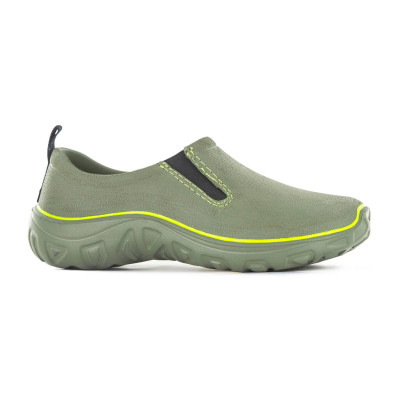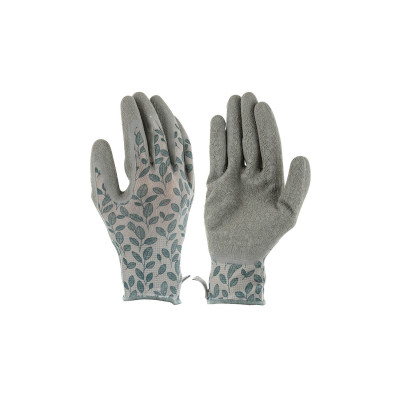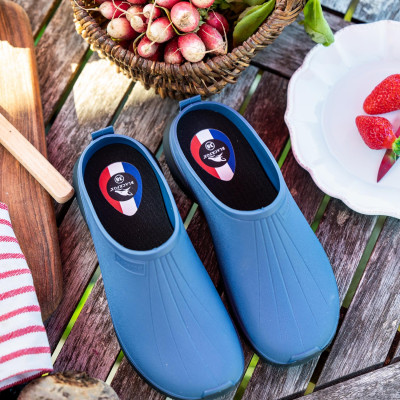Which shoes should you choose for DIY projects? Safety and comfort first
Whether you're a seasoned professional or an occasional DIYer, choosing the right shoes for your projects is not something to take lightly. As personal protective equipment (PPE), they are essential to ensure your safety and comfort, no matter the task – from the simplest jobs to the most demanding work.
Choosing the right pair of DIY shoes means protecting your feet against the many hazards found on a construction site or in a workshop: falling heavy objects, punctures from nails or screws, slips, and even electrical risks.
This guide outlines the key criteria to help you choose the DIY shoes best suited to your needs, covering safety standards, materials, comfort, and the essential technical features.
How to Choose the Right DIY Shoes? The Complete Guide
Shoes specifically designed for DIY offer optimal protection against common hazards while providing essential walking comfort – especially during long hours of work. Here are the key points to help you make the right choice and keep your feet safe.
Safety First: Essential Standards and Protection for Your Feet
DIY activities expose your feet to various hazards, which is why protection must be your top priority. Look for safety shoes that comply with recognized standards, such as the EN ISO 20345 standard, which ensures a reliable level of protection.
Key Safety Features Include:
- Toecap Protection: Essential for shielding your toes from impacts (such as falling objects) and crushing. It can be made of steel or composite materials (which are lighter).
- Puncture-Resistant Sole: A durable sole that protects the bottom of the foot from sharp objects (nails, wood splinters, metal). It can be made of steel or composite textile.
- Slip-Resistant Outsole: Crucial for preventing slips on wet, oily, or cluttered surfaces. Look for the SRC marking, which indicates the highest level of slip resistance. Our models are designed with specialized soles to ensure maximum grip.
- Hydrocarbon Resistance (FO): Important if you work with oils or grease.
- Antistatic Properties (A): Disperse static electricity.
- Heel Energy Absorption (E): Enhances comfort and reduces fatigue.
- Water Resistance (WRU/WR): Useful for outdoor work or humid environments.
- Electrical Insulation: For electrical work, always choose specially insulated shoes (marked I or EH) to protect yourself from electrical hazards.
Our DIY shoe models incorporate all these features to provide optimal protection for your feet, with abrasion-resistant materials and strategic reinforcements.
High-Performance Materials Adapted to Every Task and Use
The choice of materials directly impacts the durability, protection, and comfort of your DIY shoes.
- Natural Rubber and PVC: Provide excellent resistance to impacts, abrasion, and offer good waterproofing. They are commonly used for boots and shoes designed for wet or dirty environments.
- Leather: Strong, breathable, and durable, leather is a classic choice for safety shoes, but it requires regular maintenance.
- Synthetic Materials: Often lighter and low-maintenance, they offer good performance in terms of resistance and flexibility.
- Technical Linings: Models like our Montana shoe are reinforced and lined with neoprene and/or polyester. These linings provide excellent thermal insulation (against cold or heat) and enhance overall foot comfort.
Each material has its advantages. The choice will depend on your working environment and the specific risks involved.
Comfort: A Key Factor for Long and Stress-Free DIY Sessions
Protection is important, but comfort is just as essential—especially if you spend hours standing or walking back and forth. Comfortable DIY shoes reduce fatigue and help you stay focused.
Look for These Comfort Features:
- Waterproofing and Breathability: Keeping your feet dry is essential. Waterproof materials and/or breathable membranes help wick away moisture and sweat.
- Thermal Insulation: For working comfortably in cold or very hot conditions.
- Ergonomic Design: A well-designed shoe follows the natural shape of the foot without squeezing it.
- Cushioned Insole: A good insole absorbs shocks, supports the arch of the foot, and enhances overall comfort. Some models feature removable insoles.
- Ankle Support: Especially important for boots or high-cut shoes, it stabilizes the foot and helps prevent sprains.
- Lightweight Design: Lighter shoes (thanks to composite toecaps and soles, for example) help reduce fatigue at the end of the day.
- Proper Fit: Choosing the right size is essential for both comfort and safety. Shoes that are too big or too small can cause discomfort and increase the risk of injury.
We design our DIY shoes for men and women with these comfort criteria in mind.
Care and Durability: Extend the Life of Your Safety Shoes
Just like gardening shoes, your DIY shoes require regular care to maintain their protective features and comfort.
- Cleaning: After each intensive use, clean your shoes with a damp sponge and soapy water if needed. Remove mud, dust, and any chemical residues.
- Drying: Let them air-dry in a dry, well-ventilated area, away from direct heat sources (like radiators or sunlight) that could damage the materials. Avoid extreme temperature changes.
- Inspection: Regularly check the condition of the sole (wear, embedded objects), the stitching, the toecap, and the upper. Damaged shoes no longer provide optimal protection.
Proper maintenance will significantly extend the lifespan of your shoes and preserve their safety and comfort performance.
Conclusion: Invest in the Right DIY Shoes
As you’ve seen, even though it might be tempting to use old sneakers or casual shoes for small DIY tasks, it’s strongly recommended to opt for dedicated DIY footwear. These shoes are specifically designed to protect you from common hazards without compromising on comfort or freedom of movement. It’s a must-have investment for keeping your feet safe.
Discover our full range of DIY shoes for men and women on our online store. In just a few clicks, find the perfect model that meets your needs, your projects, and your expectations in terms of safety, comfort, and style. While you're there, take a look at our other products, including garden shoes, kids’ boots, and indoor footwear.







